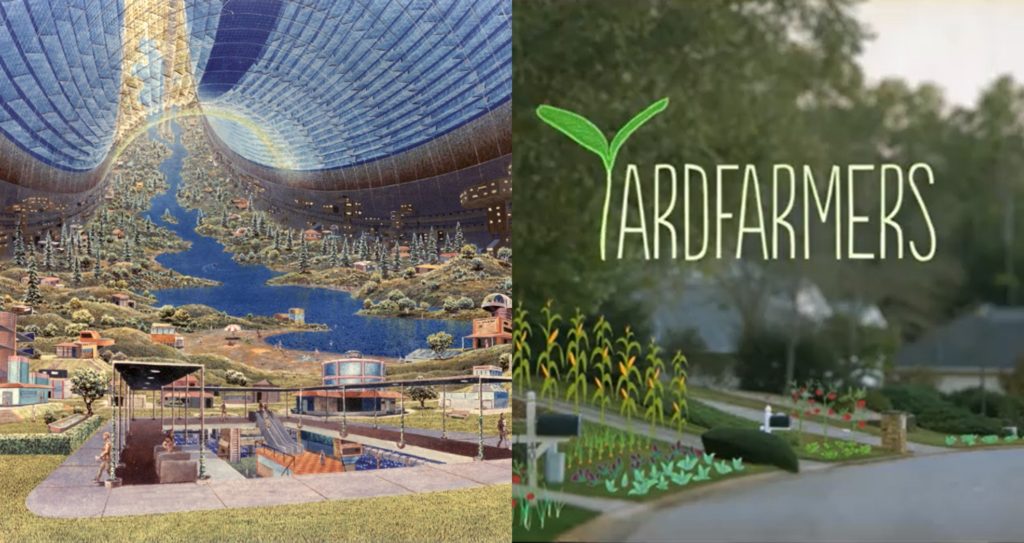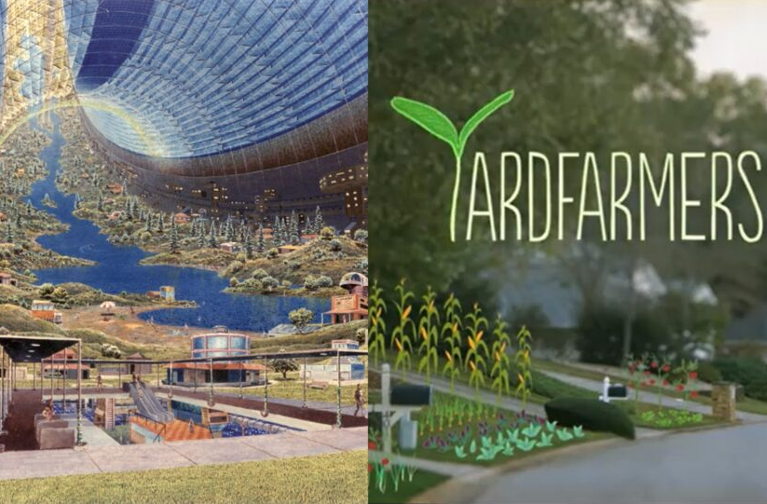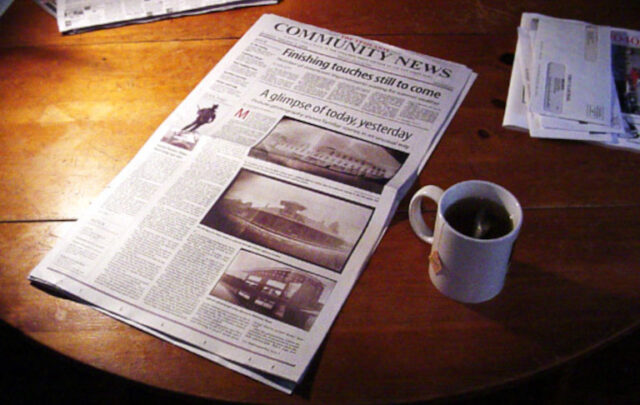This past week, I finished reading The Wizard and the Prophet by Charles C. Mann (the topic of our August Gaian Discussion). This book (Wizard, for short) chronicles two “dueling visions” regarding how to address the ecological challenges we face, and more generally about human progress and the future. Out of sheer coincidence, while reading this, I also showed my son The Star Trek (original series) episode, “The Trouble with Tribbles.”
Now, I hadn’t remembered the full premise of the episode, just the hilarious exponential growth of an unchecked but adorable tribble population. But in this new context, it was a perfect foil to Wizard. The Enterprise answers an urgent distress call from a space station, and is actually being summoned to guard a special high yield wheat-rye hybrid called Quadrotriticale to sow on a contested colony planet. Not surprisingly, the fluffy little tribbles, “who are born pregnant” and never stop reproducing as long as there’s food, and are being sold on the station as pets, find their way into the grain stores and consume the entire lot. (Yes, a similar story to any population with no predators to check it, including us, as Lynn Margulis makes abundantly clear in Wizard: ‘the fate of every successful species to wipe itself out—that is the way things work in biology’ (p. 23).)
The result of too much success. (Clip from Star Trek, “The Trouble with Tribbles.”)
The Trouble with Wizards
But the funny thing is that Mann also talks about Quadrotriticale, although he calls it C4 Rice.* C4 rice is an aspirational crop that would use a more efficient form of photosynthesis found in some plants (like fast-growing crabgrass) so as to produce more food, more quickly. Rice, for example, could produce 50 percent more grain. This, as Mann explains, would be the next stage of the “green revolution.” Just as the first stage increased food production dramatically—allowing our species to fill up the entire grain compartment (though we have yet to fall out in a dramatic flourish)—this would enable our continued growth, the continued feeding of the next two billion who are projected to arrive on the scene by 2050.**
This, ultimately, captures the heart of Wizard as well. The wizards portrayed—from the historic Norman Borlaug to people like Bill Gates (whose foundation is funding the C4 Rice research (p.197))—believe that through scientific development we can solve our way out of anything. And even if the solutions create new problems, new solutions to those problems can also be found.***
Prophets on the other hand are more cautious—questioning the perpetually optimistic “we’ll figure it out” attitude of wizards, and instead raising the point that perhaps there isn’t always a solution. In our discussion, Stefanie Hollmichel, who writes this great blog, said it best when she noted that wizards versus prophets don’t simply mean those who think technology will save us versus those who don’t, but wizards don’t believe in limits, while prophets are defined by them. That makes far more sense. As one who falls in the prophet camp, I’m all for appropriate technology. But in a world of 8 billion (or more) appropriate has become bicycles and enough energy to keep us warm(ish) in the winter and probably not even cool in the summer (unless you’ve got a medical condition).****
But I get that this prophet-style vision is not attractive. In a culture defined by progress and growth—for generations—who wants to believe that the future is about reining ourselves in (or worse, the Earth doing it for us)? Better to imagine new ways our innovative species can keep expanding—whether through better agricultural technologies or literally, by spreading out to the stars.
And that captures the prophet’s dilemma: the wizard’s vision is far more attractive. Borlaug grew up on “an impoverished family farm,” and most likely as an adult he would have scraped by as a farmer, if his cousin/teacher hadn’t seen in him an intelligence and encouraged his parents to send him off the farm to the neighboring town for high school (a huge sacrifice both in terms of costs and lost labor) (pp. 95-102). The green revolution, which Borlaug was instrumental in sparking, has meant that instead of millions eking out a living from the soil, they could go off and do interesting things—albeit at the direct cost to countless species and future generations. But ignoring that small caveat, the high tech future of advanced agriculture, flying cars, and space colonies sounds far more romantic than returning to parents’ homes to become yardfarmers (at least to most).

Which future looks more exciting: a suburbanized space colony or a suburb converted to sufficiency farms? (Images from Donald Davis via NASA and Yardfarmers.)
Space: The Final Limit to Transcend
And that’s where Star Trek comes in. Watching this extreme futuristic wizard-porn (which, don’t get me wrong, is a lot of fun), it dawned on me that nearly all science fiction fits into the wizard perspective.
How many prophet-framed sci-fi novels can you think of? Let me clarify: how many can you think of that don’t start with a collapse? There are countless novels in which, post-collapse everyone adopts a prophet’s perspective; they have no choice. (And in the cases they don’t, they crash again—A Canticle for Leibowitz and Star’s Reach come to mind.) But how many futures that embrace limits do so before the collapse? I thought of only one, Ecotopia.*****
Now, if you haven’t read Ecotopia, it’s kind of boring. That could be because of the style, which is more of a travelogue of the breakaway sustainable state of Ecotopia (the Pacific Northwest) rather than a novel, or it could simply be because the prophet future is not as exciting. There will be no first contact, no underwater sea colonies, no robot slaves, no immortality as we upload our consciousness onto the web. Instead there will be less conflict, less speed, less opportunity to be a billionaire, even if that will be coupled by less violence, less inequity, less ecological devastation. And whether people say they do or not, it seems like we value the hoped for presence of the former far more than the absence of the latter.
The point is: the prophet’s vision is a harder sell than the glitzy wizardly version of the future. Thus, we need more attempts to imagine that world. If not, the Bezoses, Bransons, and Musks of the world will win by simply showing up. And they’re not boldly going where no man has gone before, frankly, they’re not going anywhere. Our utter dependence on Gaia guarantees that. But if we fail to figure that out, our species won’t be going anywhere either—except along the same path as the dinosaurs and many other successful species of times past.
Endnotes
*I got especially excited watching Trouble as I thought the quadro actually referred to C4 photosynthesis. It could have, as the discovery came out the same year as the episode (June and December of 1967, respectively), though the writers seem to have shifted it to refer to the number of lobes the plant has.
**Truthfully, we have not filled up the entire grain bin yet. Including humans and our livestock, we now make up just 96 percent of all mammalian biomass. So sure, we still have room to grow. Though if consumerization also continues, we’ll need even more calories as meat consumption will grow as well.
***I’m indebted to Brian Stewart, Stephanie Hollmichel, and the discussion group for many of these great insights.
****At two billion people, we could’ve been a bit freer, at least for a while, especially if we had coupled appropriate sustainable technologies, efficiency, and a circular economy—then perhaps we could have even thrived for millennia.
*****Maybe two, if you include Kim Stanley Robinson’s The Ministry for the Future, though it starts with us at least bumping up hard against the limits if not transcending them.





